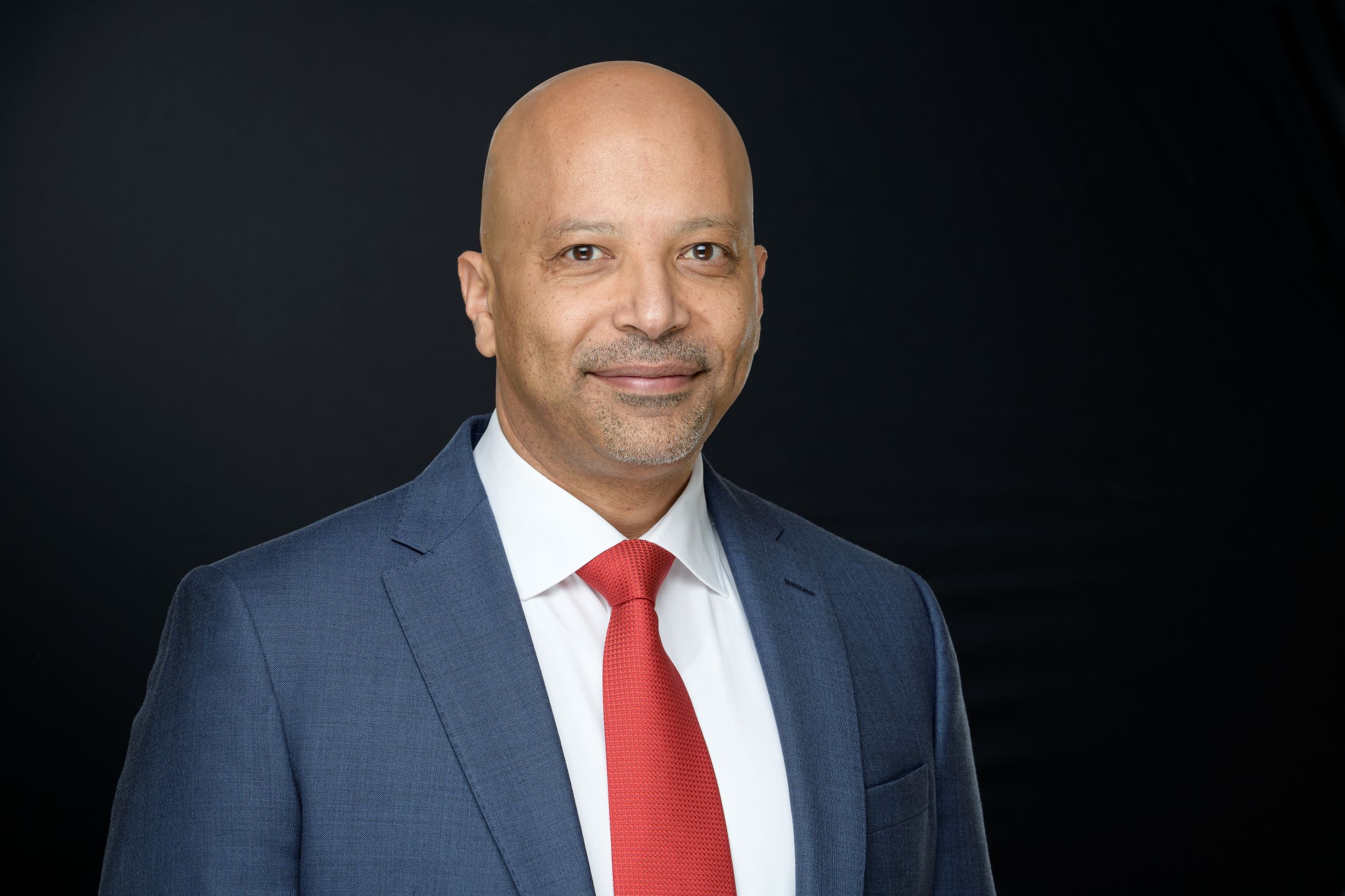
Yasser Mufti
Executive Vice President of Products & Customers at Saudi Aramco
The SandRose team met with Mr. Yasser M. Mufti, who is the current Executive Vice President of Products & Customers at Saudi Aramco and a veteran of the industry for an insightful and comprehensive conversation about the future of mobility.
Before we get into the topic at hand, would you give us a description of your professional background leading up to your current position?
I’m an electrical engineer by training, having graduated from King Fahd University of Petroleum & Minerals (KFUPM). I joined Schlumberger (now SLB) after graduating and spent five years in the field, mostly in Saudi Arabia. In 1995, I joined Saudi Aramco. It’s interesting because in 1993, Saudi Aramco acquired the Saudi Arabian Marketing & Refining Company (SAMAREC), which handled all the refining in the Kingdom at the time, with the exception of Ras Tanura Refinery. This acquisition created opportunities in the marketing organization. This marked my transition from logging wells to marketing, which I had not anticipated earlier, but it seemed like a promising opportunity. 28 years later, most of my career has been in marketing and planning. Along the way I also handled the company’s crude marketing activities in London, and managed the Hawiyah Gas Plant and other operational departments in order to gain some field experience within the company for a few years. I then joined the Ministry [of Energy] as the Governor of the Kingdom to OPEC. About 10 years ago, I came back to the beginning of an executive role within Aramco starting with heading the Transformation Program, then headed New Business Development (NBD), Aramco Trading (ATC), Strategy & Market Analysis (SMA), Fuels, and now Products & Customers. You may have heard in the news that all the commercial parts of Downstream have been combined into one area named Products & Customers, which actually ties into our topic today. So, my journey has revolved around marketing, planning, business development, and transactions.
What do you believe are the primary drivers shaping the future of mobility in the Kingdom and globally?
As economies develop, and people’s income grows, their demand for goods and services rises. Fundamentally, people want to secure a safe space to live, along with other essentials like food. As you see an increase in income, demand for mobility increases for a variety of purposes like work, leisure, or education. So, we can see mobility is intertwined with personal freedom. It is also essential to unlocking business value. Mobility enables trade, which creates mutual benefit between economies that may have been separately self-sufficient in the past. In this sense, mobility enables trade in terms of goods and services. In this dynamic, prosperity is what drives mobility and they are mutually connected. Mobility is also tied to the core human value for freedom to move as we please. In the Kingdom, we’ve witnessed how women’s driving has unleashed pent-up mobility demand and has enabled more opportunity for the Kingdom and its people, which has an implication on the demand for fuels.
How do you see the evolving relationship between energy producers, automotive manufacturers, and other stakeholders in shaping the trajectory of mobility? What opportunities and challenges do you foresee in terms of collaboration between those different stakeholders?
For mobility, there are three sectors: aviation, marine, and road. Each can be divided into individual users and businesses, which are interlinked. In the road transportation sector for the longest time, there was very limited contact between the oil suppliers and the automotive industry, despite them being co-reliant. This relationship was disrupted by two main developments: (1) climate change, which placed pressure to reduce the emissions footprint of vehicles and fuels, and (2) the emergence of competitors to the conventional internal combustion engine (ICE). There is a system-wide push to reduce CO2 emissions. You can choose whether to do so upstream, downstream, or during the mobility process. To tackle this from a strategic and economic perspective, it makes sense to focus on decarbonizing where it is cheapest to do so – but it’s seldom that simple. In terms of alternatives to ICE, we have electrification or electric vehicles (EVs). This is more disruptive to some stakeholders than others. It is the most disruptive to the automotive industry. For oil producers, there’s still substantial demand so they are not quite as disrupted. In this process, the least impacted key stakeholder is the end user. They’re simply offered an alternative with marginal differences in the actual ownership experience. While you have other stakeholders such as regulators, supply chain manufacturers, and refiners, I believe the three mentioned earlier are the most important and it’s interesting to see how they are differently impacted by this shift. It is also important to note that this impact is non-uniform across different countries and regions. Taking EV uptake as an example, you also have to consider the importance of having a well-developed charging infrastructure in order to facilitate broad adoption.
What are the primary products and technologies enabling the future of transport?
It’s important that we understand what we’re solving for here. We’re solving for mobility. Mobility is not the same as gasoline demand. As we talk about fuels, the end product is mobility, it’s the actual miles traveled. That really is the key thing. The technologies that we’re working on are doing two things. Essentially, one is to bring down the cost of mobility through efficiency. The other is reducing the driver’s carbon footprint. How do we do that? Synthetic fuels and biofuels are one way. Another is done through producing less CO2 in the production, transportation, and refining of oil to get that gallon of gasoline with less carbon footprint, which
also helps in life cycle economics. Why do we do this? Because we believe that oil can be part of the solution to the world’s mobility challenges.
What challenges do you anticipate when it comes to autonomous vehicles, connectivity, and shared mobility models influencing the oil and gas demand and how is Saudi Aramco and the industry as a whole preparing for those shifts?
Autonomy, I think, is one of the more difficult challenges that mobility has. It’s an incredibly difficult challenge for a variety of reasons, including just the sheer nature of replicating human activity. As for mobility models, that’s an interesting one. I look at shared vehicles, shared rides, and ride hailing. I’ve yet to see something that is really disruptive. I think the mobility models that are coming out are interesting, but I don’t think that they’ve dented demand in a big way.
What are you most excited about when it comes to the future of mobility?
What we’ve been talking about here, all these developments as they unlock new opportunities. It’s just the wonderful nature of the business that gives rise to all these surprises. For example, the unpredictability of how technology will unfold. One thing that I have learned early in my career is that we seem to repeat systemic mistakes in forecasting energy, in many different parts of the energy system. One of those mistakes is that it’s really hard to forecast how people’s behavior will change or stay. It’s really not easy, and so that makes the whole
thing interesting.
What is your preferred personal mode of transport and why?
I love air travel when it’s first class, on certain airlines and certain routes. I also think there’s just incredible freedom that goes with having your car. Just having your car, doing your little thing and listening to what you want to listen to. The podcasts. Driving the way you want to drive. Having that drink warmer or cooler and your shades and all of that. The car is an extension of you. I’m actually involved with Formula 1 as part of my job, and I had the chance to tour the Aston Martin factory. It’s over a century old, and yet state of the art. Some parts of the car are still built by hand. Car-making is fascinating. Some supercars will cost millions, which is incredibly expensive. Who buys these cars? The manufacturers simply call on their loyal customers to purchase them. So, you can appreciate that there is a very special bond between man and machine, and this particular machine is a means to mobility and freedom. It’s an emotional connection that is beyond pragmatic.
How do you perceive the future of transportation in the Kingdom? What are its key enablers?
The Kingdom is undergoing a huge economic transformation. Part of that future is aviation, as you can see new airports and airlines being announced, which will drive demand for aviation fuels. The Kingdom has a large space with many untapped areas, and we’ve been witnessing the development of many areas which were previously considered remote. Part of these new projects’ success will rest upon their accessibility, which will be enabled by new mobility solutions. This includes roads, air travel, and even marine transportation, which the Kingdom’s Vision 2030 builds upon on several levels. As economic development drives prosperity, demand for mobility will also increase. This also includes mass transportation, like the Riyadh Metro, which I believe will be a game changer. There is also likely to be development in technologies such as electric and hydrogen-powered vehicles and their charging or fueling infrastructure. The future of mobility in the Kingdom is very promising.

